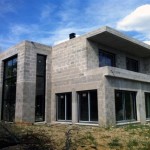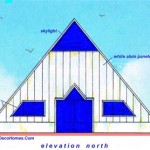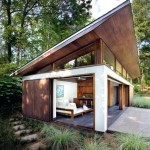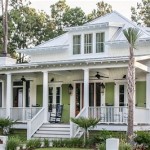Louisiana House Plans refer to architectural designs specifically tailored to meet the building and design requirements of homes in the state of Louisiana, USA. These plans take into account the unique climate, building codes, and cultural preferences of the region.
Louisiana House Plans are designed to withstand the state’s humid climate and frequent hurricanes. They often incorporate features such as elevated foundations, hurricane-resistant windows, and open floor plans that allow for cross-ventilation. Additionally, these plans reflect the rich architectural heritage of Louisiana, blending elements of French, Spanish, and Victorian styles to create distinctive homes.
In the following sections, we will explore the various aspects of Louisiana House Plans, including common design features, popular styles, and tips for choosing the right plan for your home in Louisiana.
When selecting a Louisiana House Plan, it is essential to consider the following key points:
- Climate Resistance
- Local Building Codes
- Architectural Style
- Foundation Type
- Energy Efficiency
- Floor Plan Layout
- Outdoor Living Spaces
- Customizable Options
- Professional Design
By carefully considering these factors, homeowners can choose a plan that meets their specific needs and preferences while ensuring a safe, comfortable, and stylish home in Louisiana.
Climate Resistance
Climate resistance is a crucial consideration for Louisiana House Plans due to the state’s vulnerability to hurricanes, flooding, and other extreme weather events. To ensure the safety and longevity of homes, these plans incorporate various design features that enhance their resilience to these challenges.
One key aspect of climate resistance is the use of elevated foundations. By raising the home above the ground level, it is less susceptible to flooding and storm surges. Additionally, homes with elevated foundations experience improved air circulation, reducing moisture buildup and the risk of mold and mildew.
Another important feature is hurricane-resistant windows and doors. These are designed to withstand high winds and flying debris, protecting the home’s interior from damage. They are typically made of impact-resistant glass or polycarbonate and are often equipped with reinforced frames and locking mechanisms.
Proper roofing is also essential for climate resistance. Louisiana House Plans often specify roofs with steep slopes to facilitate water runoff and prevent wind uplift. Metal roofs are a popular choice due to their durability and resistance to wind damage. They are also fire-resistant, providing an additional layer of protection during wildfires.
By incorporating these climate-resistant features, Louisiana House Plans help to ensure the safety and well-being of homeowners in the face of extreme weather events. These homes are designed to withstand the elements, providing peace of mind and long-lasting protection.
Local Building Codes
Local building codes play a crucial role in ensuring the safety and structural integrity of homes in Louisiana. These codes establish minimum standards for construction, materials, and design, and they are developed to address the specific environmental and geological conditions of the region.
- Flood Zone Regulations
Louisiana has extensive areas designated as flood zones, and building codes in these areas require homes to be elevated above a certain level to mitigate the risk of flooding. Homes must also be constructed with flood-resistant materials and techniques to minimize damage in the event of flooding.
- Wind Resistance Standards
Louisiana is prone to hurricanes and high winds, so building codes mandate the use of hurricane-resistant construction methods. These include reinforcing roof structures, installing impact-resistant windows and doors, and using wind-resistant roofing materials.
- Energy Efficiency Requirements
Local building codes in Louisiana incorporate energy efficiency standards to reduce energy consumption and lower utility costs for homeowners. These standards may include requirements for insulation, energy-efficient appliances, and solar panels.
- Fire Safety Regulations
Building codes also establish fire safety requirements, such as the use of fire-resistant materials, smoke detectors, and fire sprinkler systems. These measures help to prevent the spread of fire and protect the lives of occupants.
By adhering to local building codes, Louisiana House Plans ensure that homes are built to withstand the unique challenges of the region and provide a safe and comfortable living environment for homeowners.
Architectural Style
The architectural style of a Louisiana House Plan is an important consideration that reflects the homeowner’s personal preferences and the region’s cultural heritage. Louisiana’s diverse architectural landscape showcases a blend of influences, from French colonial to Victorian and modern styles.
One of the most iconic architectural styles in Louisiana is the French Colonial style. This style, popularized during the 18th and 19th centuries, features steeply pitched roofs, dormer windows, and wide porches with intricate railings. French Colonial homes often have symmetrical facades and are characterized by their use of brick, stucco, and wrought iron accents.
Another popular style is the Victorian style. Introduced in the mid-19th century, Victorian homes are known for their elaborate ornamentation, bay windows, and gingerbread trim. They often feature asymmetrical facades and steeply pitched roofs with decorative gables. Victorian homes commonly showcase a mix of materials, including wood, brick, and stone.
In recent years, modern architectural styles have gained popularity in Louisiana. Modern homes prioritize clean lines, open floor plans, and large windows that bring in natural light. They often feature sustainable materials and incorporate energy-efficient design elements. Modern Louisiana House Plans may also incorporate traditional elements, such as porches and balconies, to blend with the region’s architectural heritage.
Ultimately, the choice of architectural style for a Louisiana House Plan depends on the homeowner’s taste and the desired aesthetic. By considering the region’s unique character and diverse architectural influences, homeowners can select a plan that creates a home that is both stylish and reflective of their personal style.
Foundation Type
The foundation of a house is a critical structural element that provides support and stability to the entire building. In Louisiana, where the soil conditions can be challenging due to high moisture levels and expansive clays, selecting the right foundation type is essential for the long-term performance of a home.
The most common foundation types used in Louisiana House Plans are:
- Slab-on-Grade Foundation
This type of foundation consists of a thick concrete slab poured directly on the ground. It is a popular choice for homes built on level lots with stable soil conditions. Slab-on-grade foundations are relatively inexpensive to install and provide good resistance to moisture.
- Raised Foundation
Raised foundations elevate the home above the ground level, typically on concrete piers or columns. This type of foundation is suitable for areas with poor drainage or where flooding is a concern. Raised foundations allow for better air circulation beneath the home, reducing moisture buildup and the risk of mold and mildew.
- Pier and Beam Foundation
Pier and beam foundations use concrete piers or columns to support the weight of the home, with wooden beams spanning between the piers. This type of foundation is common in areas with expansive soils, as it allows the home to move slightly with the soil without causing damage to the structure.
In addition to these common foundation types, some Louisiana House Plans may also incorporate special foundation designs to address specific soil conditions or building requirements. For example, homes built on slopes may require a stepped foundation or a retaining wall to provide additional support.
The choice of foundation type for a Louisiana House Plan should be made in consultation with a qualified engineer or builder who is familiar with the local soil conditions and building codes. A properly designed and constructed foundation is essential for ensuring the structural integrity and longevity of the home.
Energy Efficiency
Energy efficiency is a crucial consideration in Louisiana House Plans due to the state’s hot and humid climate. By incorporating energy-efficient features, homeowners can reduce their energy consumption, lower utility costs, and create a more comfortable living environment.
- Insulation
Proper insulation is essential for maintaining a comfortable indoor temperature while reducing energy consumption. Louisiana House Plans typically specify high levels of insulation in the walls, ceilings, and floors to minimize heat transfer. This helps to keep the home cooler in the summer and warmer in the winter, reducing the need for excessive heating and cooling.
- Energy-Efficient Windows and Doors
Windows and doors are major sources of energy loss in a home. Louisiana House Plans often incorporate energy-efficient windows and doors that are designed to reduce heat transfer. These windows and doors feature double or triple glazing, low-emissivity coatings, and tight seals to minimize air leakage and improve insulation.
- Energy-Efficient Appliances
The choice of appliances can significantly impact a home’s energy consumption. Louisiana House Plans may recommend or require the installation of energy-efficient appliances that meet certain energy efficiency standards. These appliances, such as refrigerators, dishwashers, and washing machines, use less energy to operate, reducing utility costs and environmental impact.
- Solar Energy
Louisiana’s abundant sunshine makes solar energy a viable option for many homeowners. Louisiana House Plans may incorporate features that support the installation of solar panels, such as south-facing roofs and electrical wiring designed for solar integration. Solar panels can generate electricity from sunlight, reducing reliance on the grid and further lowering energy costs.
By incorporating these energy-efficient features, Louisiana House Plans help homeowners create homes that are comfortable, sustainable, and cost-effective to operate. These homes provide a healthy and energy-conscious living environment while reducing the impact on the environment.
Floor Plan Layout
The floor plan layout of a Louisiana House Plan is carefully designed to meet the unique needs and lifestyles of homeowners in the region. Louisiana homes often feature open and spacious floor plans that promote natural airflow and maximize living space.
- Open Living Areas
Louisiana House Plans frequently incorporate open living areas that combine the kitchen, dining room, and living room into one large space. This open concept design creates a sense of spaciousness and allows for easy flow between different areas of the home. It also facilitates social interaction and family gatherings.
- Large Windows and Natural Light
Louisiana homes are known for their large windows that let in ample natural light. These windows not only provide beautiful views of the surrounding landscape but also reduce the need for artificial lighting, saving energy and creating a more inviting atmosphere.
- Outdoor Living Spaces
Outdoor living is an integral part of the Louisiana lifestyle. Many Louisiana House Plans include outdoor living spaces, such as porches, patios, or decks, that extend the living area outside. These spaces allow homeowners to enjoy the outdoors, entertain guests, and relax in the fresh air.
- Mudrooms and Utility Areas
Louisiana’s humid climate and outdoor-oriented lifestyle often lead to the inclusion of mudrooms or utility areas in Louisiana House Plans. These spaces provide a designated area for removing dirty shoes, storing outdoor gear, and keeping the home clean and organized.
By incorporating these thoughtful design elements into the floor plan layout, Louisiana House Plans create homes that are both functional and comfortable, reflecting the unique lifestyle and climate of the region.
Outdoor Living Spaces
Outdoor living spaces are an essential feature of Louisiana House Plans, reflecting the region’s warm climate and emphasis on outdoor recreation. These spaces extend the living area outside, providing homeowners with a place to relax, entertain guests, and enjoy the beautiful surroundings.
- Porches
Porches are a staple of Louisiana architecture. They provide a shaded and comfortable outdoor space where homeowners can relax, read, or visit with friends and family. Porches are often designed with ceiling fans or screened enclosures to provide protection from the sun and insects.
- Patios
Patios are another popular outdoor living space in Louisiana House Plans. Patios are typically constructed with brick, concrete, or pavers, and they offer a durable and low-maintenance surface for outdoor activities. Patios are often used for grilling, dining, or simply relaxing in the sun.
- Decks
Decks are elevated outdoor living spaces that are typically made of wood or composite materials. They provide a great place to enjoy the outdoors while being slightly elevated above the ground. Decks are often used for sunbathing, grilling, or entertaining guests.
- Balconies
Balconies are outdoor living spaces that are attached to the upper level of a home. They offer a great way to enjoy views of the surrounding area and can be used for relaxation or entertaining. Balconies are often designed with wrought iron railings or other decorative elements.
In addition to these main types of outdoor living spaces, Louisiana House Plans may also include other features such as outdoor kitchens, fire pits, and swimming pools. These amenities further enhance the outdoor living experience and make Louisiana homes perfect for enjoying the region’s mild climate and beautiful scenery.
Customizable Options
Louisiana House Plans offer a wide range of customizable options to meet the specific needs and preferences of homeowners. These options allow homeowners to personalize their homes and create a living space that truly reflects their lifestyle and taste.
- Floor Plan Modifications
Homeowners can modify the floor plan of their Louisiana House Plan to create a layout that perfectly suits their family’s needs. This may involve adding or removing rooms, changing the size or shape of rooms, or relocating walls to create a more open or closed floor plan.
- Exterior Finishes
Louisiana House Plans offer a variety of exterior finishes to choose from, including brick, stucco, siding, and stone. Homeowners can select the exterior finish that best complements their personal style and the architectural character of their neighborhood.
- Roofing Options
Louisiana House Plans provide a range of roofing options, including asphalt shingles, metal roofs, and tile roofs. Homeowners can choose the roofing material that best suits their budget, aesthetic preferences, and the climate of their region.
- Interior Features
Homeowners can customize the interior features of their Louisiana House Plan by selecting from a range of options such as flooring, cabinetry, countertops, and lighting fixtures. These choices allow homeowners to create a home that reflects their personal taste and creates a comfortable and stylish living environment.
By offering these customizable options, Louisiana House Plans empower homeowners to create truly unique and personalized homes that meet their specific needs and aspirations.
Professional Design
Professional design is a crucial aspect of Louisiana House Plans, ensuring that homes are not only aesthetically pleasing but also structurally sound and functional. Architects and designers who specialize in Louisiana House Plans possess the knowledge and expertise to create homes tailored to the unique climate, building codes, and lifestyle of the region.
One of the key benefits of professional design is the ability to optimize space and create efficient floor plans. Architects can design homes that maximize natural light, promote airflow, and provide a seamless transition between indoor and outdoor living spaces. They can also create custom floor plans that cater to the specific needs of each family, ensuring that the home meets their unique requirements.
Professional designers also have a deep understanding of local building codes and regulations. They can ensure that the home is designed in compliance with these codes, ensuring the safety and structural integrity of the building. Additionally, they can provide valuable advice on material selection and construction methods, helping homeowners make informed decisions that will enhance the longevity and durability of their home.
Furthermore, professional designers can incorporate sustainable design principles into Louisiana House Plans. They can specify energy-efficient materials, design homes that take advantage of natural ventilation, and incorporate renewable energy sources. By doing so, they can create homes that are not only comfortable and stylish but also environmentally responsible.
Investing in professional design for a Louisiana House Plan provides numerous benefits, including optimized space utilization, compliance with building codes, sustainable design, and enhanced aesthetics. By working with a qualified architect or designer, homeowners can create a home that meets their specific needs, reflects their personal style, and stands the test of time.










Related Posts








